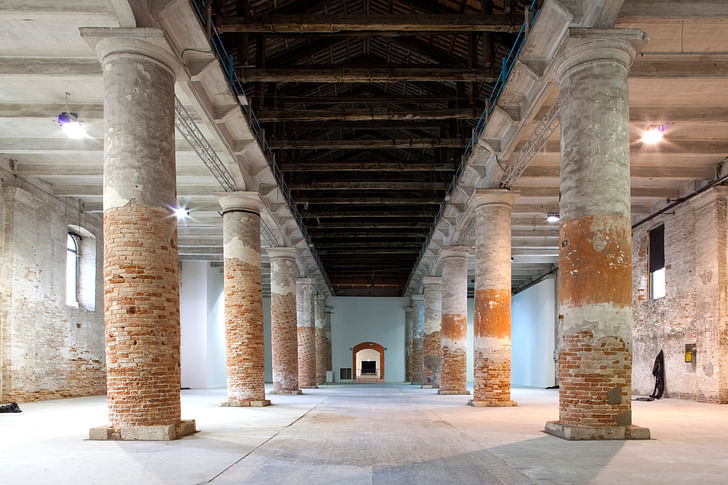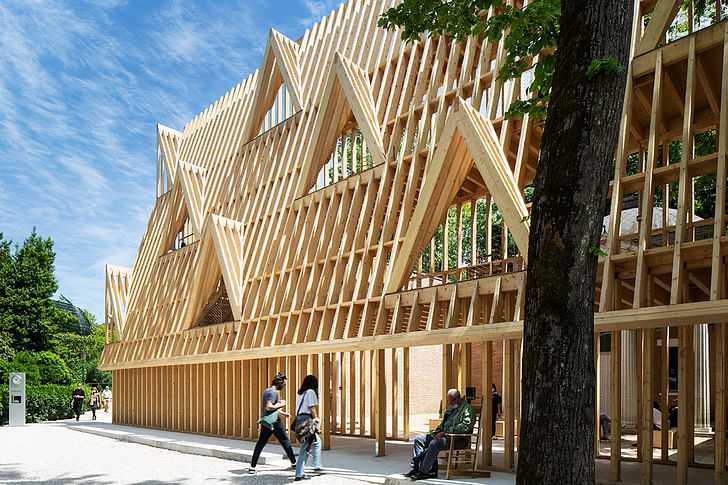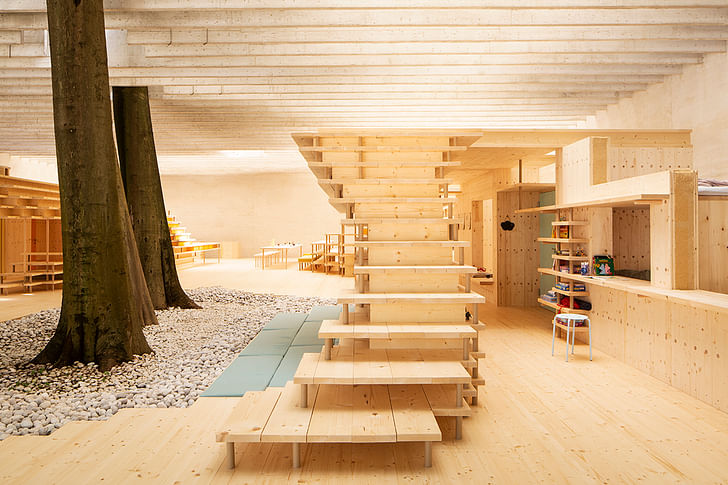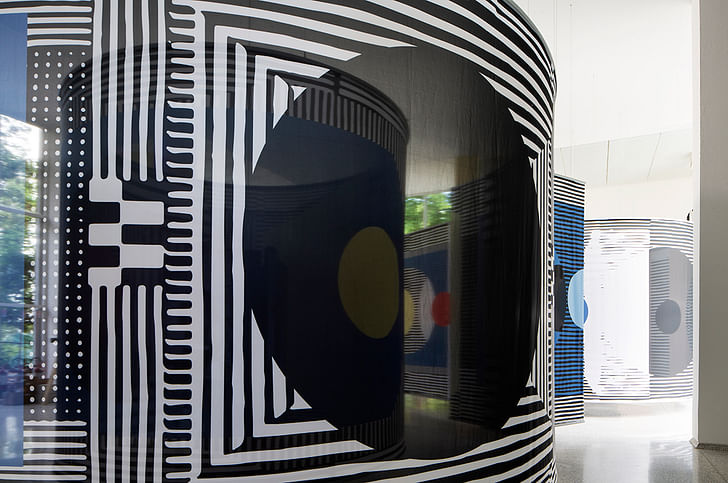

Since the beginning of the COVID-19 pandemic, the way we live, work, and interact has transformed. The architecture world has been forced to adapt in tandem, with our means of design, communication, and education all undergoing rapid changes. Though set against a tragic backdrop, this forced evolution of the industry has opened new avenues for the future of work and education which were either unproven or unconsidered before the pandemic. However, while the rest of the industry evolved, the 2020 Venice Biennale chose to delay its opening date in order to proceed with its traditional format. This opinion piece reflects on how the Biennale may have missed a once-in-a-generation opportunity to radically reform how it promotes contemporary architectural trends, and in doing so, address long-held concerns over its relevance, accessibility, and environmental impact.
In his 1919 poem The Second Coming, William Butler Yeats penned one of the most cited lines in the history of poetry: “Things fall apart; the center cannot hold.” Yeats wrote the line at a time of upheaval and turmoil. The world was still grappling with the Spanish Flu pandemic, while rebuilding in the aftermath of World War One. Communist revolutions were underway across Russia and Eastern Europe, while Yeats’ own country of Ireland sat on the brink of a war of independence from Britain.
In the one hundred years since the poem’s publication, Yeats’ words are frequently resurrected to describe how, at times of crisis, established orders run the risk of upheaval and replacement by the “anarchy” of the new, whether for better or worse. The line was cited by Senator Robert Kennedy in 1968 to describe the political landscape at the height of the Civil Rights era, while The New York Times declared in 2007 that “The Second Coming is fast becoming the official poem of the Iraq war.” In 2018, acclaimed Irish journalist Fintan O’Toole even proposed the “Yeats Test”, theorizing that the use of Yeats’ poetry by politicians and the media should be an index of how bad the world had become.
Throughout the COVID-19 pandemic, we have passed the "Yeats Test" with flying colors. From January 2020 onwards, we have been reminded again that when things fall apart, the center cannot hold. For the past eighteen months, established norms around international trade, fundamental workings of national economies, and even long-assumed rights of movement and assembly, have all been upheaved and replaced by ad-hoc alternatives.
The COVID-19 pandemic will be remembered as a tragic era in human history. However, for those who adapted to this strange new world, the past two years have also been a time to reflect on what did and didn’t make sense about the pre-pandemic world.
For architects too, professional lives were upended. Like millions, we were forced to work from home, with firms around the world establishing apps, software, and communication tools to replace traditional office environments. Material sourcing was thrown into sharp relief, both for the rapid increases in prices of certain products, or the reliability of global supply chains. Commercial and office projects were paused or scrapped, while domestic projects seemingly endured. Many designers even offered their services to the healthcare industry, be it through mobile ICU units or makeshift hospital wards. Meanwhile, architecture school tutorials, presentations, and end-of-year shows moved out of the studio, and into digital space, or at the very least, a digital-first hybrid.
The COVID-19 pandemic will be remembered as a tragic era in human history. However, for those who adapted to this strange new world, be they individuals, companies, or institutions, the past two years have also been a time to reflect on what did and didn’t make sense about the pre-pandemic world. “COVID-19 will leave a lasting imprint on the world economy, causing permanent changes and teaching important lessons,” says Sergio Rebelo, a professor of international finance at the Kellogg School of Management at Northwestern University. “Remote work is likely to become more common. We had some evidence that working from home is at least as productive as working at the office. However, many companies were reluctant to embrace remote work. Now that many have tried it with good results, remote work might be here to stay.”

This forced experiment in remote work has led to even more fundamental revaluations. Publications such as James Suzman’s Work: A Deep History, from the Stone Age to the Age of Robots describe how before COVID-19, a person’s identity was deeply attached to their occupation, including in the professional services sphere that architects occupy. However, eighteen months of remote working has dismantled this link. A full 66% of unemployed Americans are now considering changing their occupation, a number far higher than during the 2008 recession. Even among those still employed, the raw distilling of one’s employment to eight hours in front of a home computer screen, without the frills of office gossip or socializing, has caused a deep introspection over how meaningful or fulfilling our core roles and occupations really are.
This “mid-work crisis” is no doubt fueling the 16-23 million Americans who are planning to relocate away from major cities, or the nearly 30% of working professionals who would quit their jobs if forced to return to their office after the pandemic. It is difficult to imagine such seismic shifts in workplace attitudes occurring without the upheaval of the pandemic, and without the new strategies, processes, and arrangements that many of us were forced to participate in to ensure our industries and livelihoods stayed afloat.
Rather than mirroring the wider industry in saying “the show must go on,” the message from the Biennale was “try again soon.”
While a vast majority of the architecture community participated in this race to adapt and evolve, the Venice Biennale appears to have stood still. Originally due to open on 23rd May 2020, the Biennale opening was pushed first to 29th August 2020, and ultimately to 22nd May 2021, where it will now remain open until 27th November. Rather than mirroring the wider industry in saying “the show must go on,” the message from the Biennale was “try again soon.” Now open for over a month, there are few signs that the Biennale has fundamentally changed or evolved in response to the pandemic, apart from health and safety considerations familiar to any event during COVID-19.
That is not to say that the contents of the Biennale championed conservatism. Curator Hashim Sarkis’ thematic question “How will we live together?” was destined to evoke strong responses from the Biennale’s 61 national pavilions and 112 participants. The subthemes of many participants addressed some of the most urgent questions within and beyond the architecture community. The British Pavilion, for instance, used their exhibition “The Garden of Privatized Delights” to seek alternatives to the growing privatization of public space at a time where public protest offers an important channel of opposition to everything from police brutality to climate change. The Nordic Pavilion, meanwhile, uses a 1:1 cross-section of a timber co-housing project to advocate for communities “based on participation and sharing.” Titled “What We Share,” the exhibition advocates for the Scandinavian co-housing model as a way of tackling multiple crises, including loneliness, climate change, and a lack of affordable housing.

The Nordic countries are among several who are championing timber construction, albeit at a time when lumber prices are soaring in the wider construction industry. The Philippine Pavilion titled “Structures of Mutual Support” merges vernacular wood building methods with a collaborative design and construction approach between architects and members of a local community north of Manila. The resulting elegance takes the question “how will we live together?” and reframes it as “how we could build together.” Meanwhile, the United States has won acclaim for shunning a “starchitect” approach to the Biennale, instead celebrating the humble residential timber construction method that represents almost 95% of all houses in the United States. The Dutch Pavilion has also been praised for its interpretation of the theme “How will we live together?” by asking who is “we.” Arguing that architectural and urban discourse often excludes marginalized groups and the natural world, the exhibition explores how architecture can champion inclusivity and reject monocultural thinking.
The timely question posed by Sarkis, and the provocative responses of the participants, demonstrate the capacity of architecture as a vehicle for systemic change. However, this optimism is undermined by a rigid Biennale format which seems fundamentally averse to change. In a notable critique of the event in The Architectural Review, Carolyn Smith observed that “due to the disruption caused by the pandemic, many large events are treating 2021 as an opportunity to try something different: perhaps smaller, maybe a little experimental, potentially even quite radical. Persistent uncertainties, ongoing travel restrictions, and the proven value of ‘the local’ present not only an opportunity but an incentive for event organizers to engage with local residents and businesses. But not for the Biennale.”
As a result of the pandemic, the 2021 edition of the Biennale is likely to be one of the least-visited in recent years, a frustrating reality given the importance of the questions and topics posed by the participants.
Amidst the chaos of COVID-19, the Biennale had an unprecedented opportunity to try something new, and to address some of the most enduring critiques of the event. Instead, as a result of the pandemic, the 2021 edition of the Biennale is likely to be one of the least-visited in recent years, a frustrating reality given the importance of the questions and topics posed by the participants. By choosing to delay rather than evolve, the Biennale has missed an opportunity to restructure its dependence on temporary physical installations, and instead explore how the creative energy of participants could be translated to other media or methods, including digital space. By transferring ideas from the Giardini to our digital devices, with the same urgency and ingenuity with which we brought construction projects and degree shows into our homes, the Biennale could have made major strides against its perception as being inaccessible or elitist, beneficial only to those who have the time and financial means to make the long pilgrimage to Venice.

This missed opportunity is all-the-more despairing in the context of the climate crisis. As Smith notes in her Architectural Review critique, “the [Biennale's] most self-evident problem is the vast amount of material consumption. The Biennale’s reliance on temporary, bespoke installations – and the absence of a sustainability agenda from the Biennale Foundation to aid with recycling or reusing materials – is completely out of step with the global shift towards the careful use of resources.” Given the substantial contribution of both embodied carbon and material waste in construction to climate change, the uncapped use of building materials to construct the Biennale’s temporary structures is not only harmful due to their own emissions, but also as unfortunate symbols of an industry which is unaware, or ambivalent, about its broader contribution to the climate crisis. Had the Biennale used the unprecedented license afforded by recent global upheavals to redefine how it showcases architectural ingenuity, it could have overcome the understandable reluctance of historic institutions to break from tradition and steer the Biennale towards a more sustainable future.
We are left only to speculate on what long-term changes could have been unearthed if the Biennale had taken the brave decision to depart from convention in 2020, as the rest of the industry did.
By maintaining a status quo, the Biennale has missed what Smith correctly identifies as a “golden opportunity to reflect on long-standing issues and determine the direction for its future.” We are left only to speculate on what long-term changes could have been unearthed if the Biennale had taken the brave decision to depart from convention in 2020, as the rest of the industry did. As Smith notes, a fresh Biennale format could have uncovered new ways of integrating with local Venice events traditionally drowned out by the international event. Or perhaps we could have seen a stronger embrace of digital space, serving the needs of those who traditionally experience the Biennale only through photographs and reviews. More radical still, perhaps we could have seen the Biennale re-evaluate its mission of “bringing the world to Venice”, instead leaving the Italian city to partner with participants around the world in their own countries, negating the need for mass international convergence on a city already struggling with the effects of climate change.
As demonstrated through the permanent seismic shifts caused by workplace displacement during COVID-19, the decision to adapt and evolve in the face of crisis can breed unexpectedly positive results; results that could not have been foreseen in any prior survey or roadmap. The near future may see a model of architecture firm or school that seamlessly incorporates remote work, digital design processes, flexible employment hours to the benefit of its staff’s personal lives, and a reduced need for expensive office space and commuting costs. By contrast, as the media spotlight on the Venice Biennale begins to fade, a rich collection of important ideas and efforts is destined to accumulate some of the lowest visitor numbers in the event’s history. Meanwhile, we are left only to speculate on what might have been had the Biennale followed the example of industry, and the prophecy of Yeats.
Niall Patrick Walsh is an architect and journalist, living in Belfast, Ireland. He writes feature articles for Archinect and leads the Archinect In-Depth series. He is also a licensed architect in the UK and Ireland, having previously worked at BDP, one of the largest design + ...
2 Comments
very good perspective NPWalsh. Tx
Very good piece. With a conclusion that was clear from the day the decision to postpone was made.
https://www.archdaily.com/9353...
Block this user
Are you sure you want to block this user and hide all related comments throughout the site?
Archinect
This is your first comment on Archinect. Your comment will be visible once approved.